With Covid-19 restrictions not going to be relaxed soon in Singapore, we can only travel around and rediscover our small sunny Island. Companies have come up with cool virtual tours as well as art & craft activities for kids to introduce landmarks around the world, but nothing beats going to attraction to experience it for yourself.
Having read many articles on how to take cool photos as though you are in another country, I found an area in Singapore in which you can pretend you are overseas—all within walking distance from each other: Balestier.
As a father of 3 children, I know to go from place to place is not easy and so an excursion to an area is just more practical.
I have arranged them more or less in the order of the route I would take from 1 site to another. Before you read on, just to share that I have launched a Balestier Tour with magic, puzzles and games. The feedback have been amazing so far so I hope you can join us on this amazing tour. (It is VERY different from the route below.)
Feel free to customise this tour to suit your children’s attention span. Travel away, folks!
1. The Whampoa Dragon
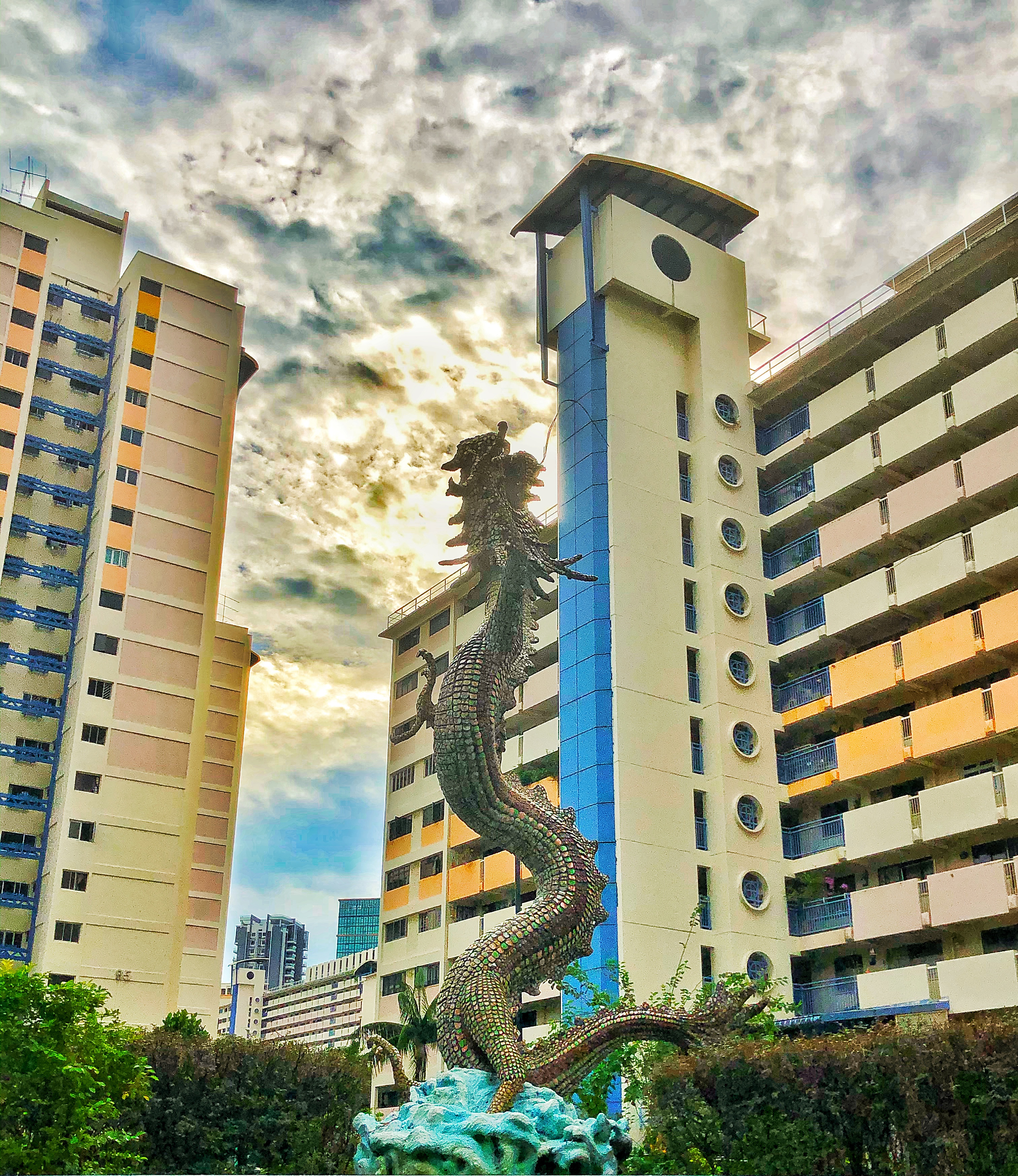
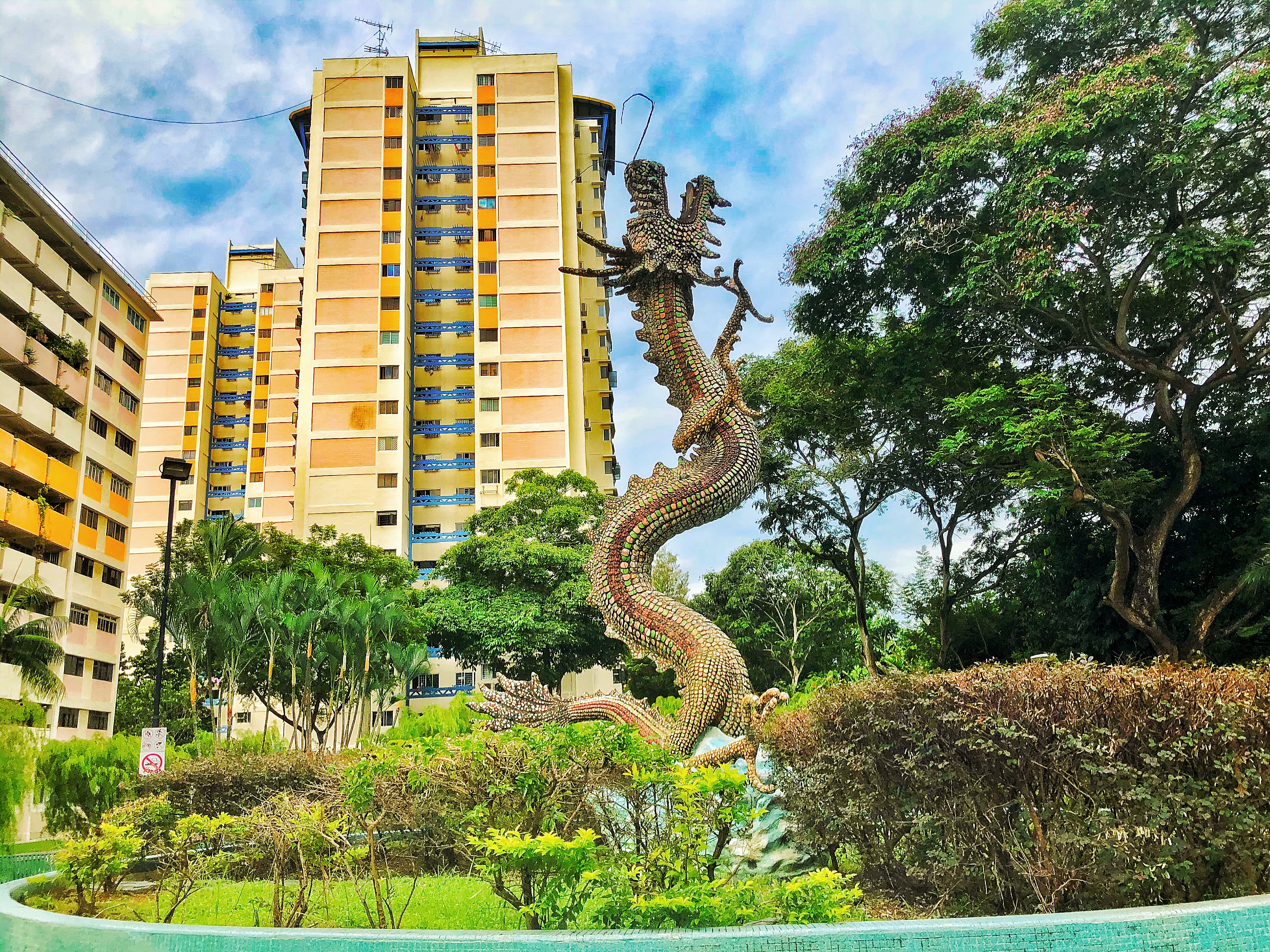
Completed in 1973, the Dragon Fountain at Whampoa Drive used to be situated within a large park. The Chinese dragon, clad in numerous pieces of porcelain shards and glass, is depicted as soaring towards the sky.
However, the fountain stopped functioning years ago. Dried leaves are clogging the drainage system. With the mouth cemented, the dragon still shines in its former glory despite weathering the sun and rain over the years.
Where and what is it like: Dragon Sculpture at Park Guell in Barcelona.





Antonio Gaudi pioneered a special mosaic design technique putting together broken ceramic tiles to create pictures and sculptures. (Though the Chinese have been using that to decorate their shophouse years before.)
Several buildings would epic the story of St George slaying a dragon, Park Guell is no exception. Hence the lizard-like sculpture above in the picture is actually a dragon!
2. Kwan Yow Luen and Sim Kwong Ho Shophouse
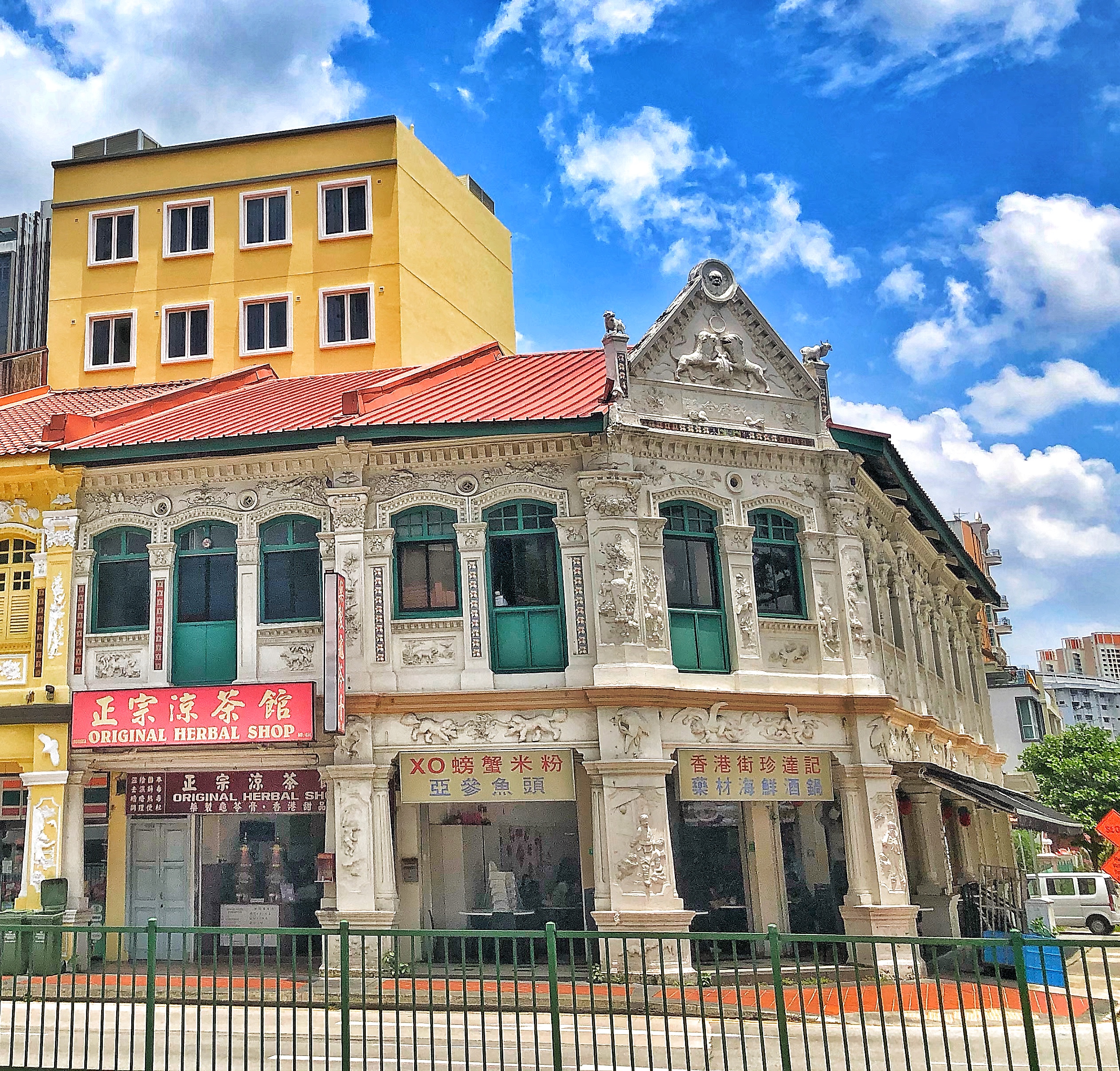
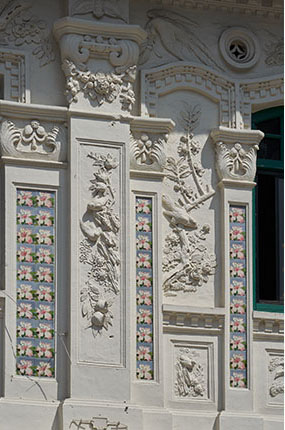
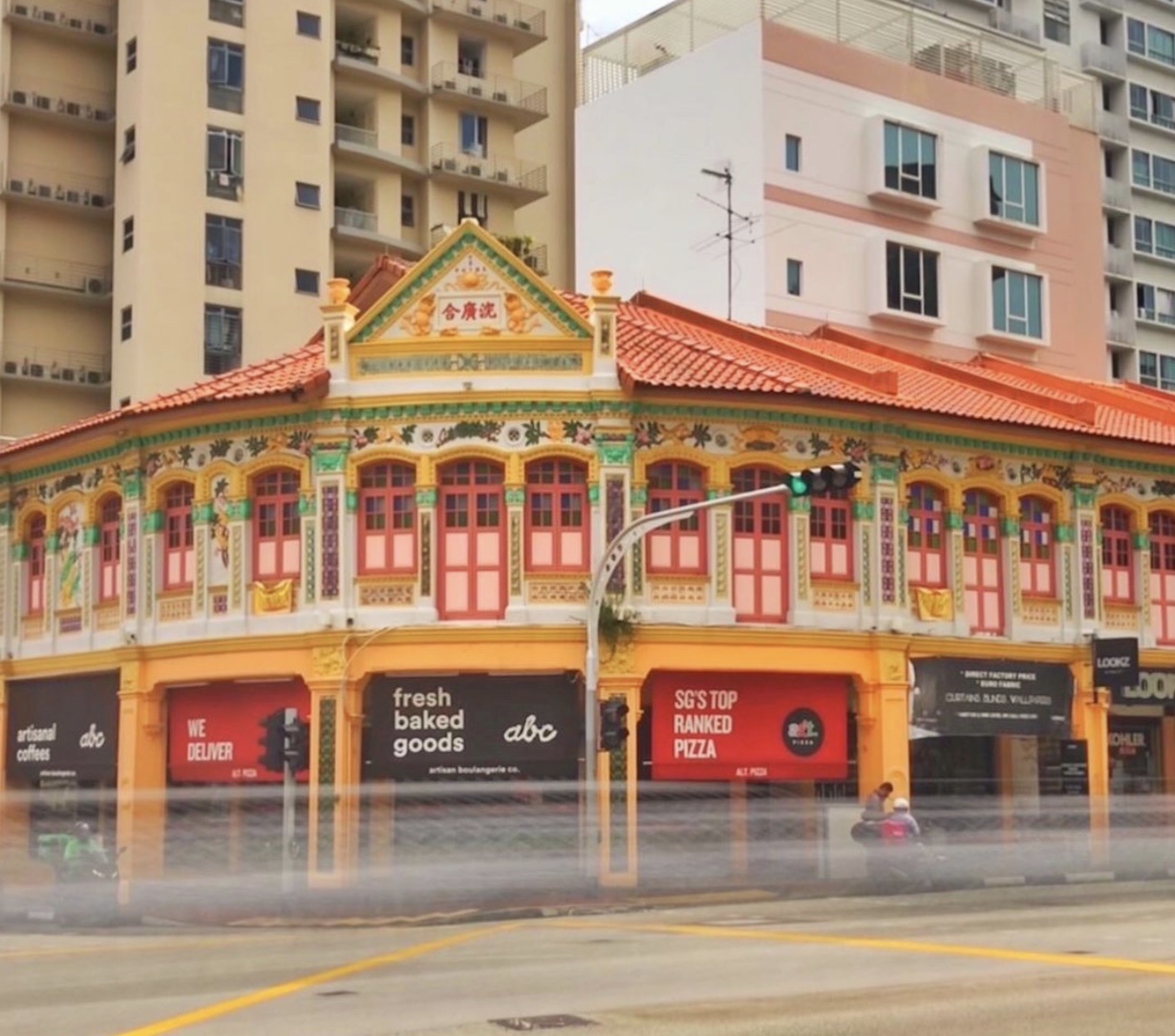
Of course, the whole of Balestier has many amazing shophouses but these 2 stand out. Both shophouses were built by Sim Cheng Neo, a lady whose family home was located at 503 Balestier Road. Sim also developed shophouses at 292-312 Balestier Road, Sophia Road and Roberts Lane.
- The white shophouse designed by Kwan Yow Luen (1873-1977) who was self-taught local architect and well-known for designing traditional shophouses.
- Both are designed Straits Baroque style (Chinese Eclectic) – Western elements such as molded pilasters (wall columns) and pediments (triangular frontispiece) with local symbols and motifs reliefs of flowers and animals.
Unique features to look out for:
- the corner pediment (roof frontispiece) features a pair of proud lions flanked by water buffalos
- the ground-level columns have 2 Sikh jagas (Malay for “guards”) protecting the building, effectively replacing the stone lions. These guards from Punjab, India are tall and muscular, with commanding personalities and a reputation for honesty and hard work.
- The shophouses were featured in the 1955 Malay movie Penarek Becha (“Trishaw Puller”), in which Amran, a poor trishaw puller (P Ramlee), rescues his love interest Azizah from 2 bullies.
Where and what is it like: George Town in Penang, Malaysia
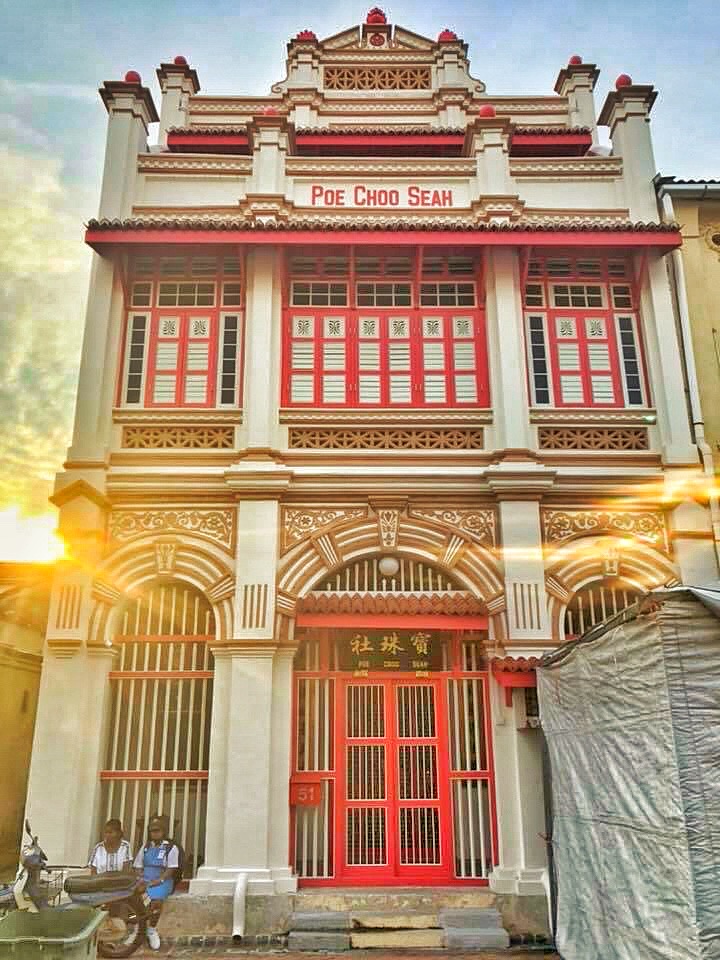
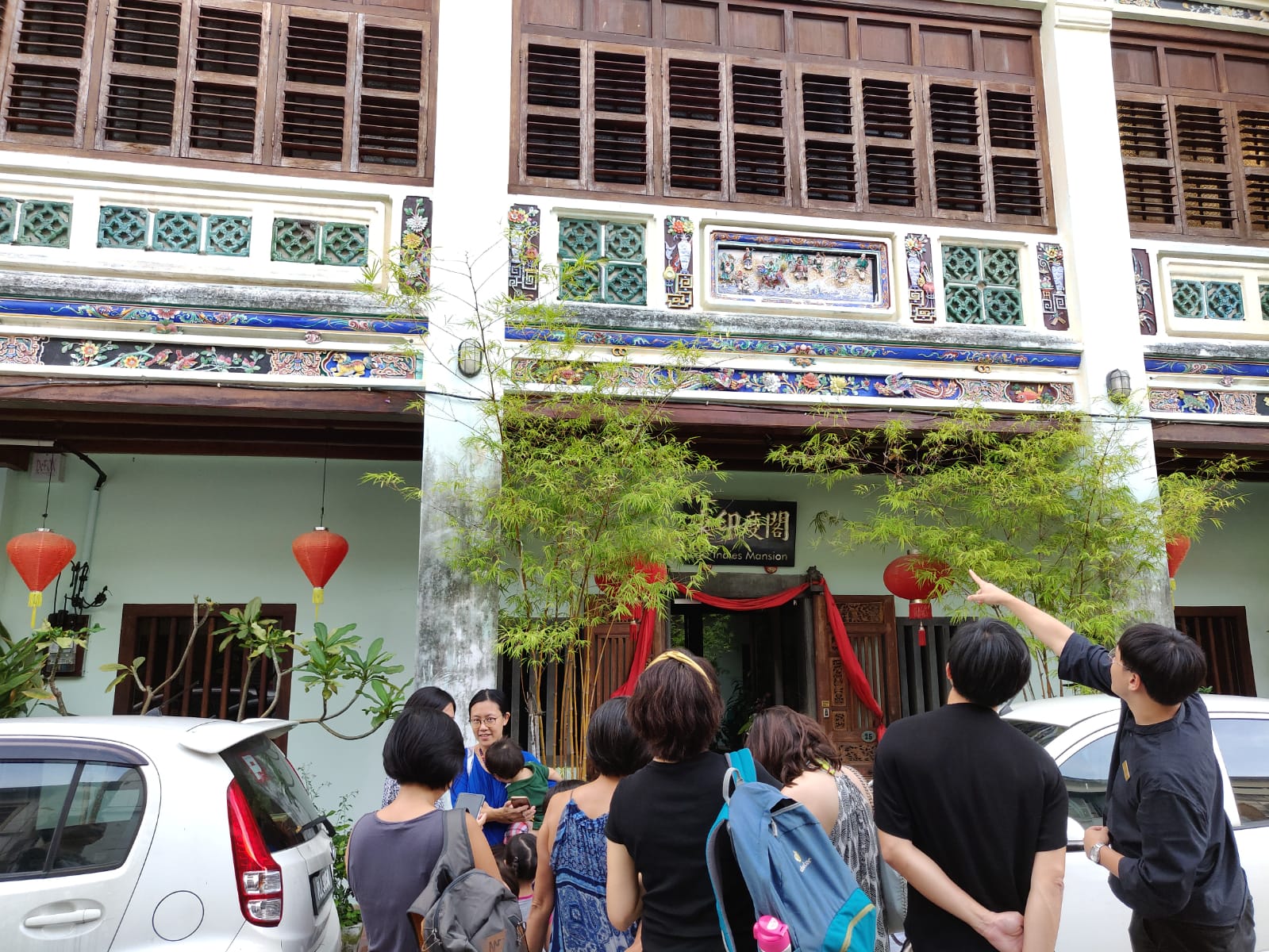




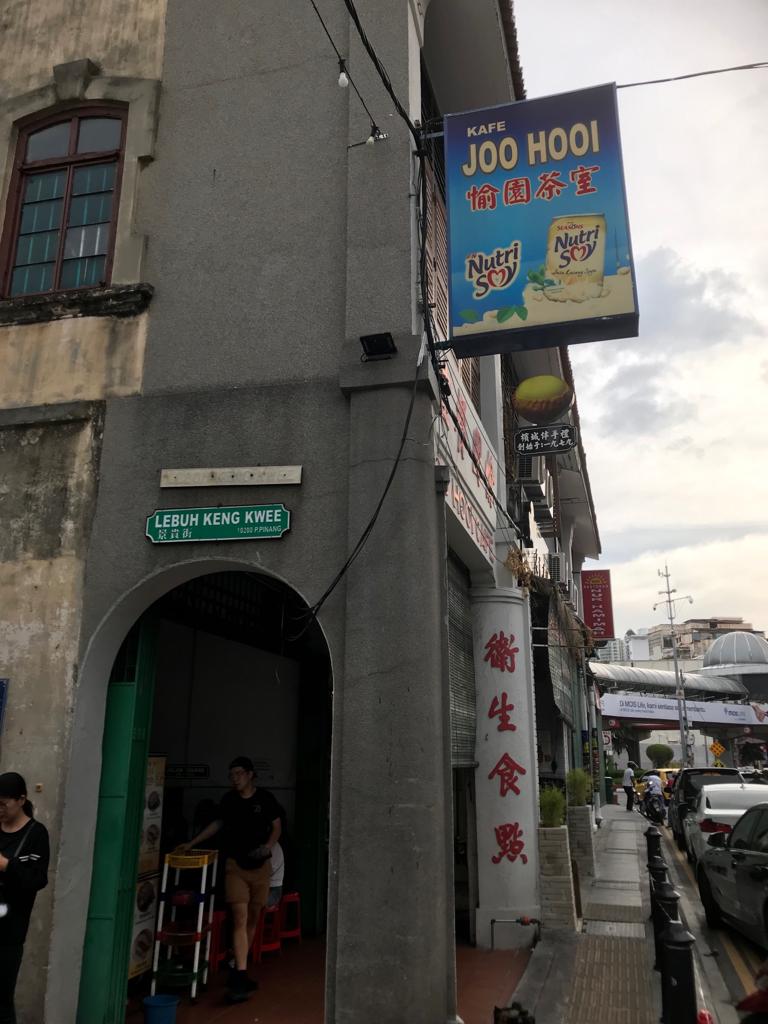
George Town in Penang, Malaysia is known for its British colonial buildings as well as Chinese shophouses. It was even granted a UNESCO Heritage status. If the old town is worthy of this award, I am sure Balestier can be considered too.
3. Balestier Point
Balestier Point is a mix-development project which is ahead of its time. What does this look like?
Yes! LEGO!
Where and what is it like: Habitat ’67, Montreal in Canada.
The architects of Balestier Point said that they are inspired by Habitat ’67, which was renowned international architect Moshe Safdie’s first major project. He also designed MBS, Interlace and Jewel in Singapore. It was his thesis project and his Professor suggested that the World’s Fair use this. It was later converted into a housing project.
4. Sun Yat Sen Nanyang Memorial Hall


This villa was built in 1902 by Boey Chuan Poh, a merchant who named it Bin Chan House, possibly after his horse.
In 1905, local businessman Teo Eng Hock bought the villa to serve as a retirement home for his mother and renamed it Wan Qing Yuan (Mandarin for “Serene Sunset Villa”).
In late 1905, Teo offered the villa to Dr Sun Yat Sen, leader of the Tong Meng Hui, for his revolutionary activities.
With the support of the overseas Chinese communities, Dr Sun’s forces launched a series of uprisings against the Qing dynasty and eventually overthrew the Chinese imperial government in 1911. Sun Yat Sen Nanyang Memorial Hall
A typical colonial villa in Singapore, Sun Yat Sen Nanyang Memorial Hall is well adapted to the tropical climate of the region.
Entrance is FREE for Singaporeans and for foreigners, there are discounted tickets on Klook! Highly recommended to go to visit (especially for children for an air-con rest-stop.)
Where and what is it like: Sun Yat-sen Memorial Hall of Guangzhou, China
Though Sun Yat-sen Memorial Hall in Guangzhou is much bigger than Singapore’s, it has many similarities:
- It is the site of Sun Yat-sen’s office on the south slope of Yuexiu Hill. In Singapore, many of the revolution plans were made there.
- Both combine the architectural style of East and West. The main building of the hall in Guangzhou’s was constructed in a traditional Chinese palace style with an octagonal shape from the outside while the inside is all western style. Singapore’s style is typical of the Malaya shophouse called Straits eclectic.
- Both had a bronze statue of Dr Sun Yat-sen at the front of the building.
5. Maha Sasana Ramsi Burmese Buddhist Temple
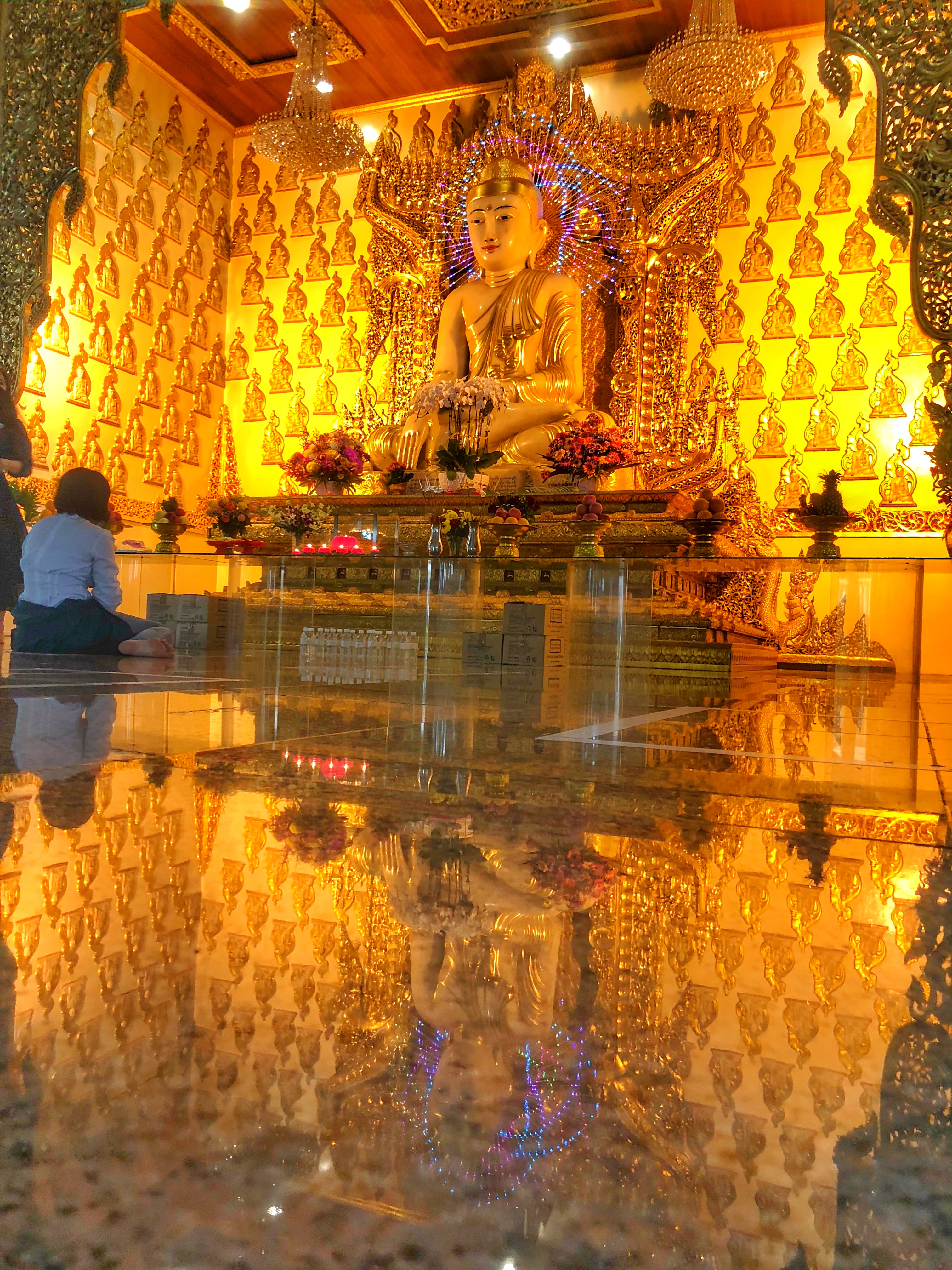
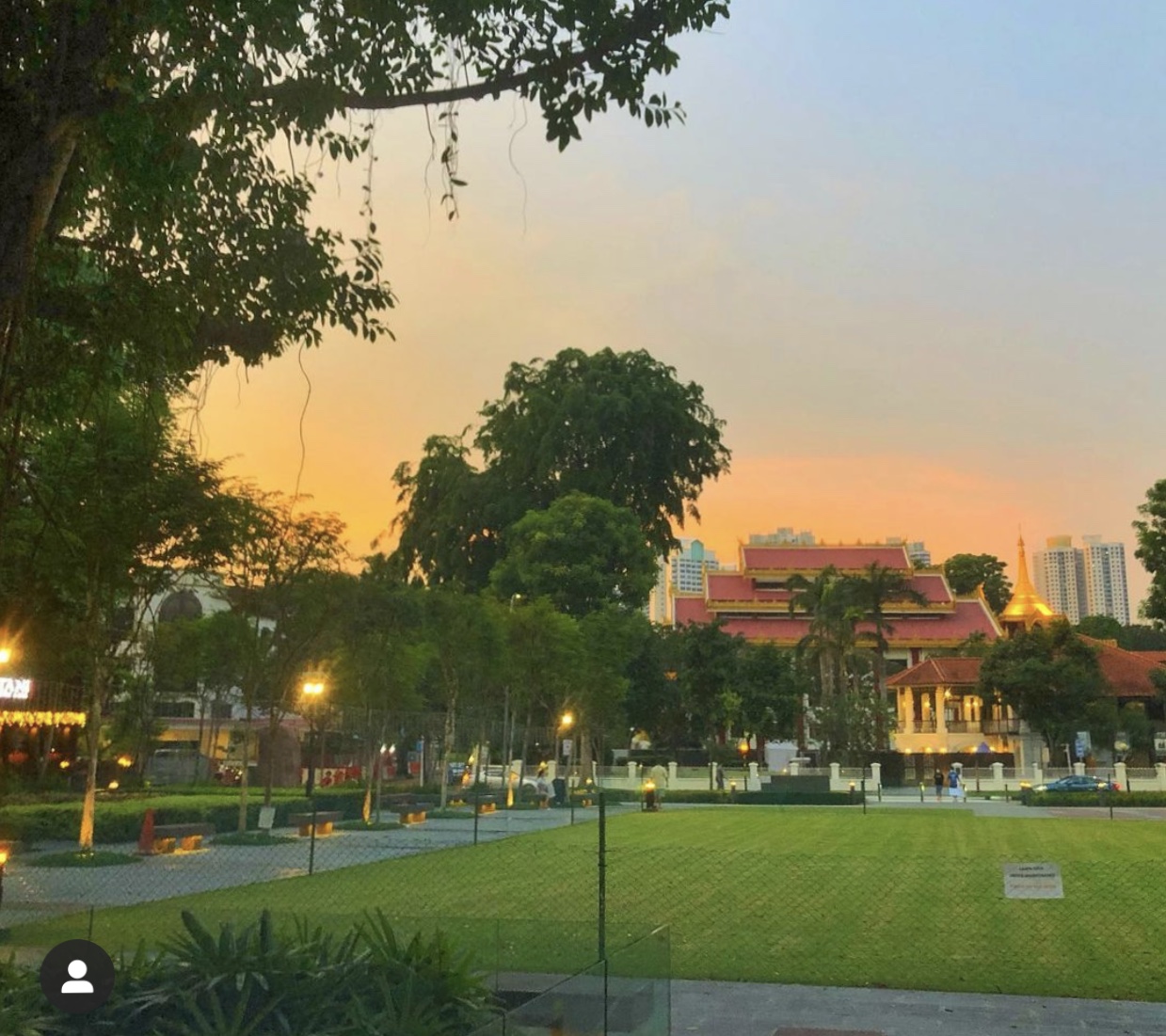
The Burmese temple moved here from Serangoon Road (1878) in 1991. It houses the largest Buddha statue (3.3m) outside of Myanmar made of pure white marble. The grand temple has two Chin Thays, mystical creatures which are like lions, guarding the doorway. During the Burmese New Year, the temple will be crowded with Burmese staying in Singapore. They practise water blessing by pouring water over the buddha to help improve things like health, fame and wealth.
Where and what is it like: The Shwedagon Pagoda , Myanmar
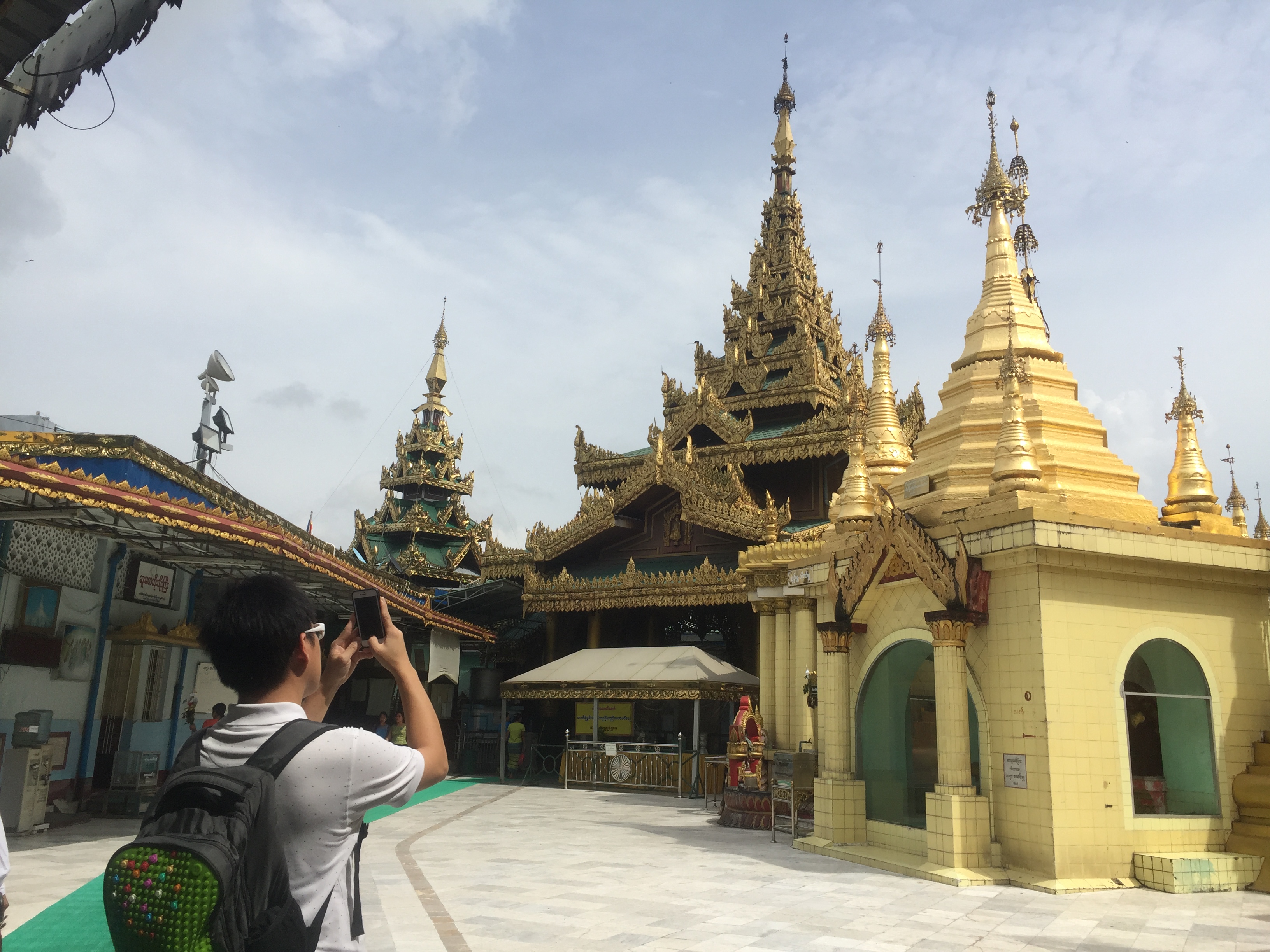
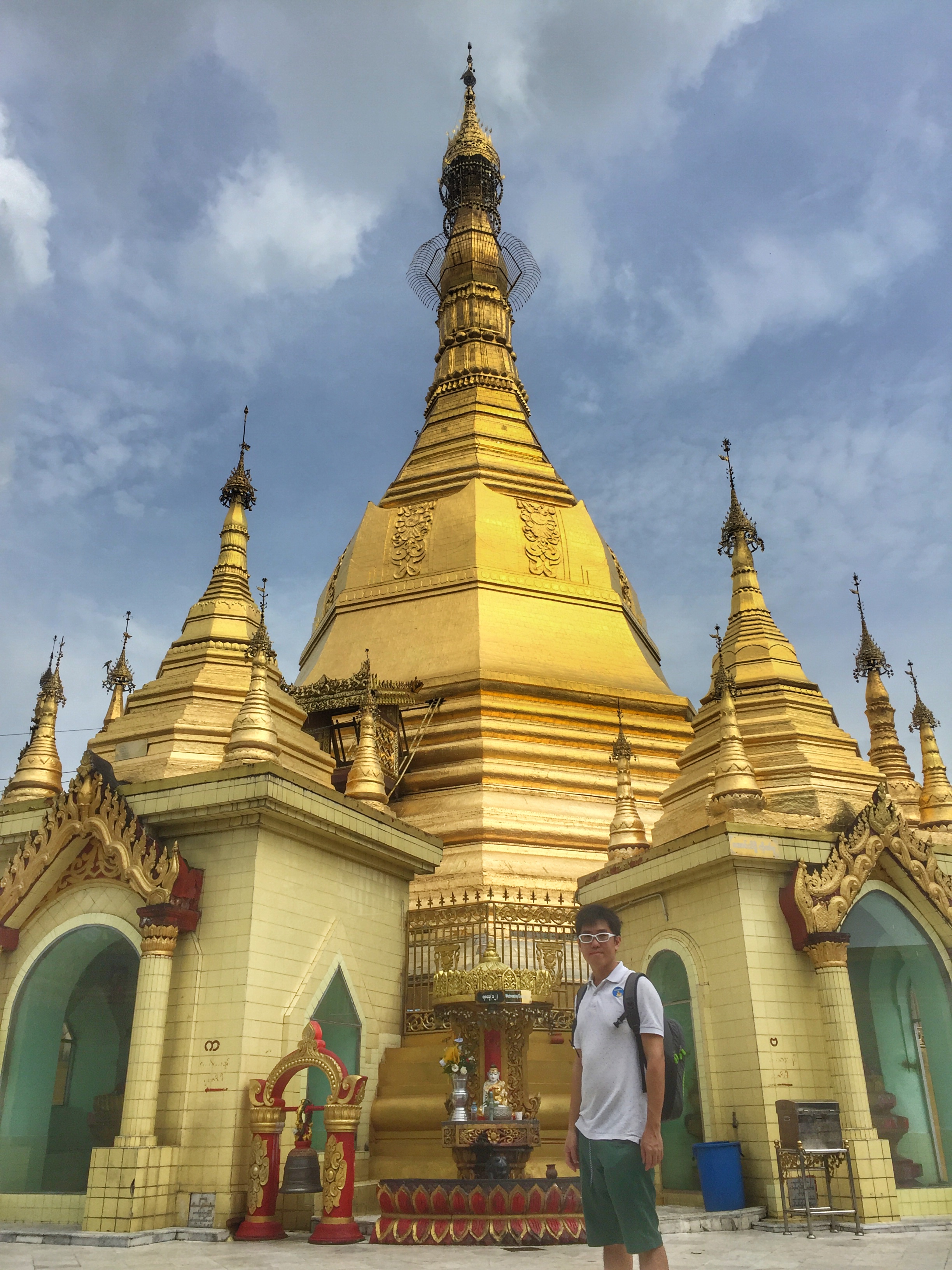
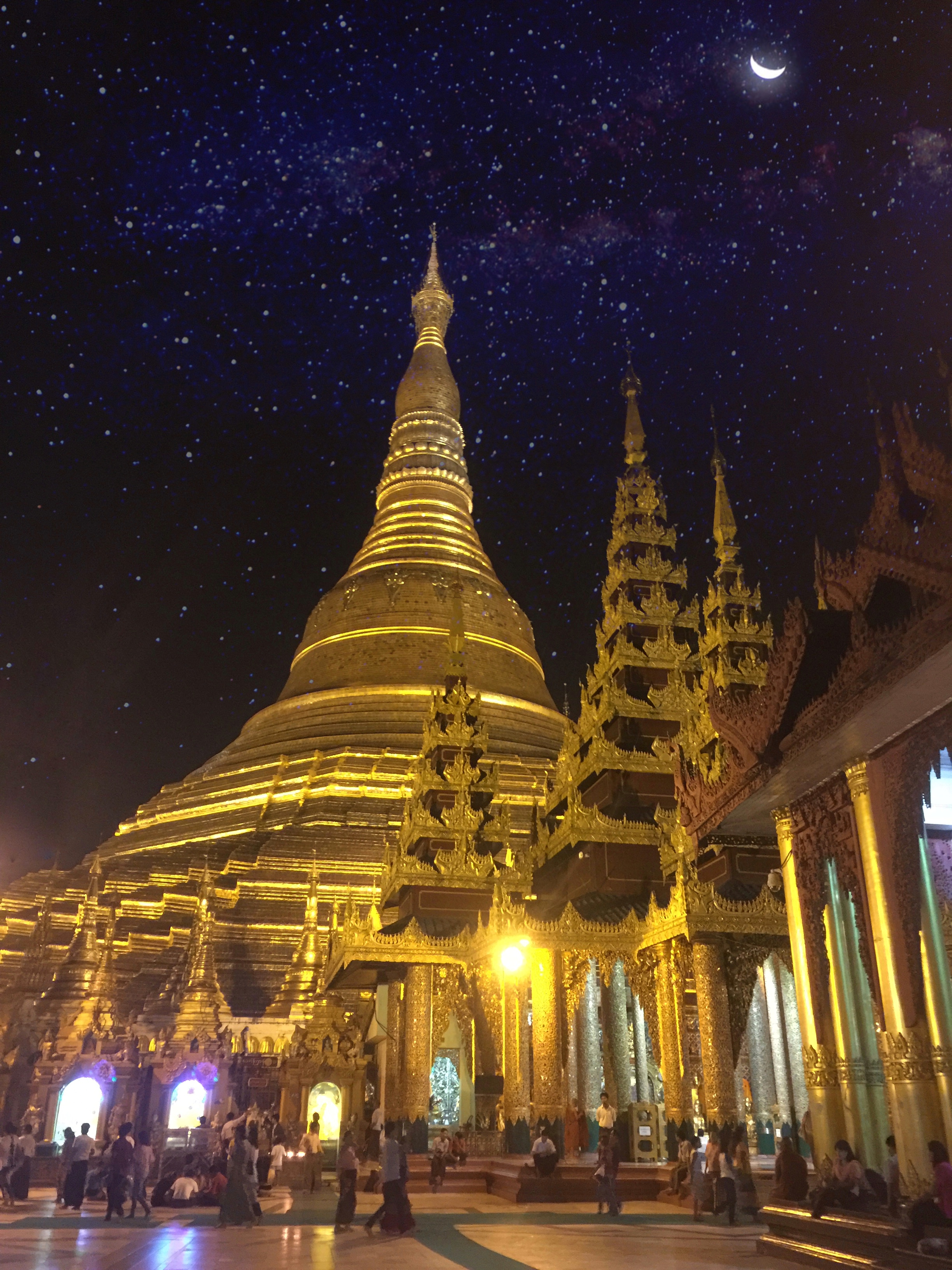
The Shwedagon pagoda is the most sacred Buddhist pagoda in Myanmar, as it is believed to contain relics of the four previous Buddhas of the present kalpa. These relics include the staff of Kakusandha, the water filter of Koṇāgamana, a piece of the robe of Kassapa, and eight strands of hair from the head of Gautama.
Buildings in Yangon can only be 75% of the current height of the pagoda as per the city restrictions.
Of course, the Singapore’s version is not as majestic as Myanmar’s but a lot of the Singaporeans whom I brought to Maha Sasana Ramsi Burmese Buddhist Temple are amazed about it. Definitely worth a visit!
6. Novena Church
The name of this cathedral is actually Church of St Alphonsus. The MRT station and this area are called Novena because of our church. Since 1949, Saturday novenas were held in the chapel. A ‘novena’ is a devotion carried out over nine days. This was very popular with Christians and even attracted non-Christians then. As many as 20,000 people came to the church every weekend.
The Gothic-style Cathedral was completed in 1997 and the old building was just a small building.
Where and what is it like: Notre-Dame de Paris, France.

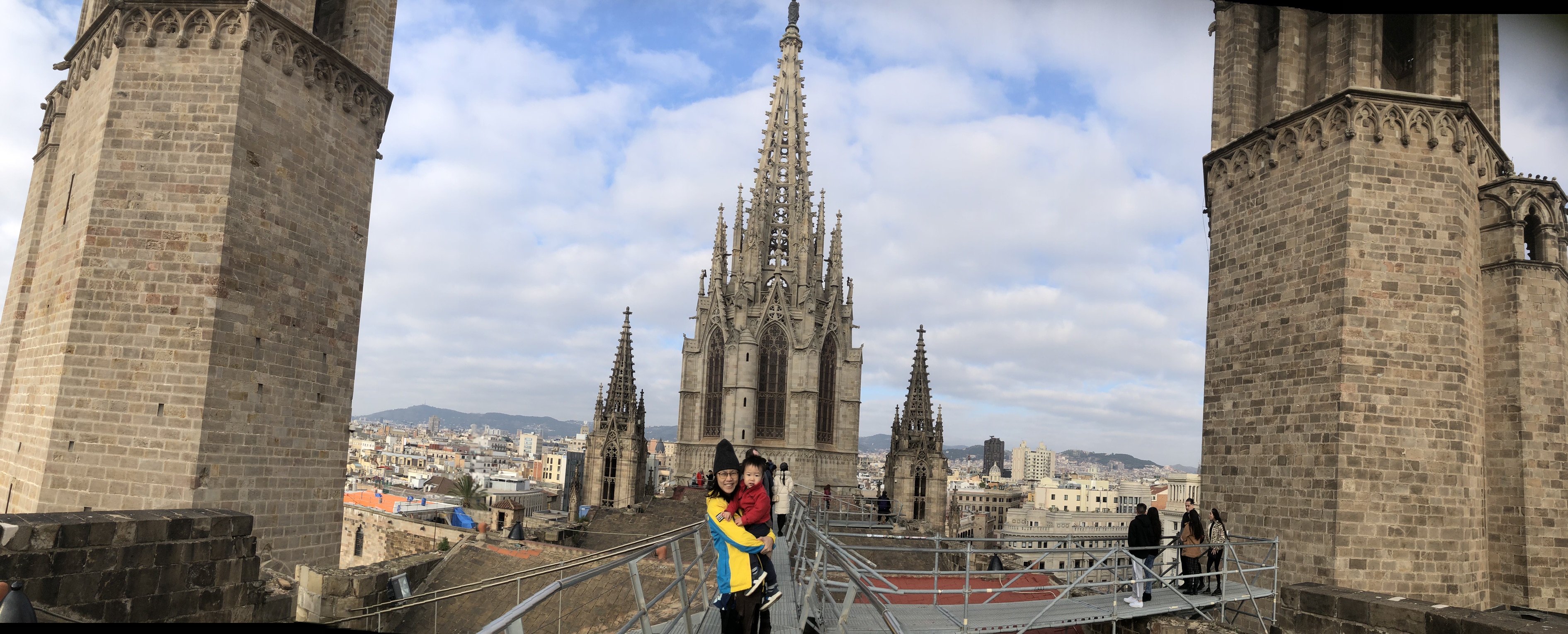
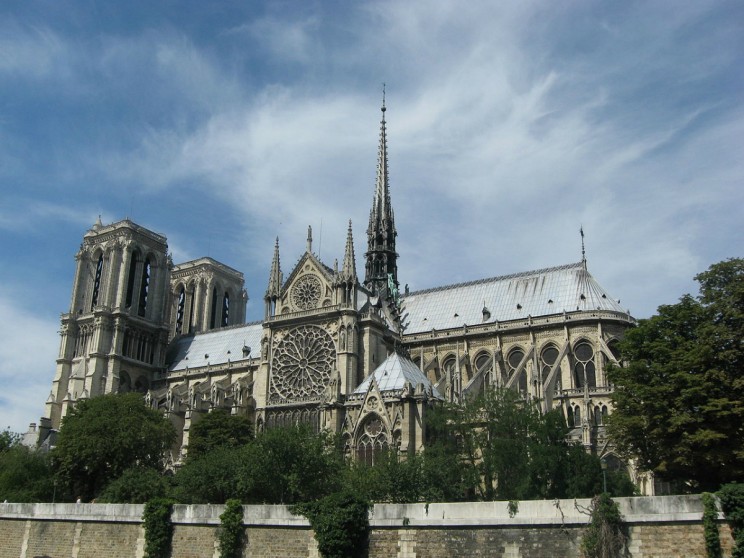
Notre-Dame de Paris (Source: Interesting Engineering)
Of course, many Gothic-style cathedral like Barcelona Cathedral would fit the bill.
Notre-Dame de Paris, or simply Notre-Dame, is the largest and best-known churches in France, let alone Europe. Construction began in 1163 and was completed in 1345.
7. Haniffa Building


If you drive on CTE, you may notice this building. This unique house is actually a ten-storey tall building with middle eastern motifs throughout the building. What makes this building stand out is the undulating roof. Businessman O. K. Mohamed Haniffa, who is in his 80s, built it to house his family of 15 and five helpers. Mr Mohamed is the chairman of textile and garment company Haniffa on Dunlop Street.
Where and what is it like: Casa Batllo in Barcelona, Spain
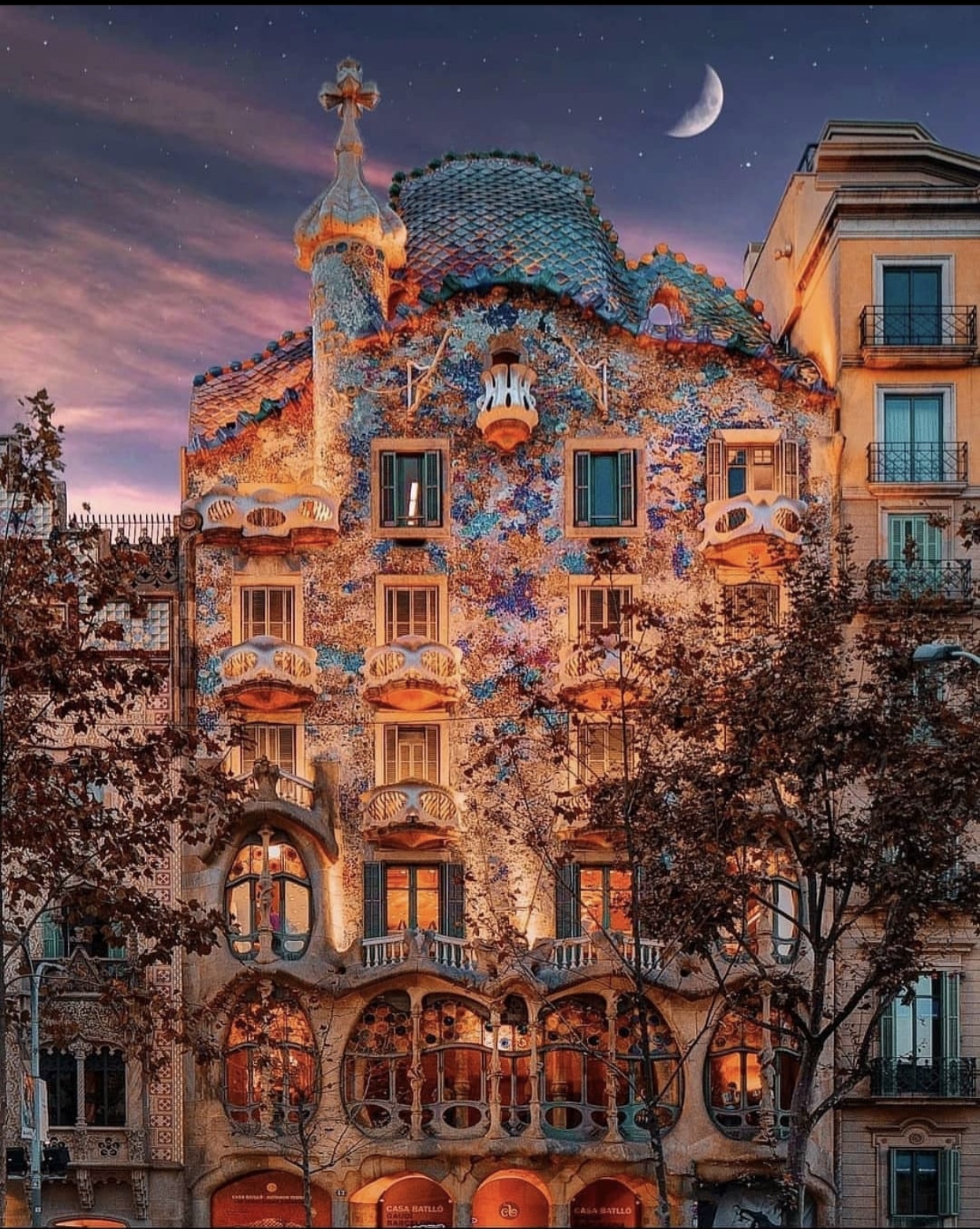
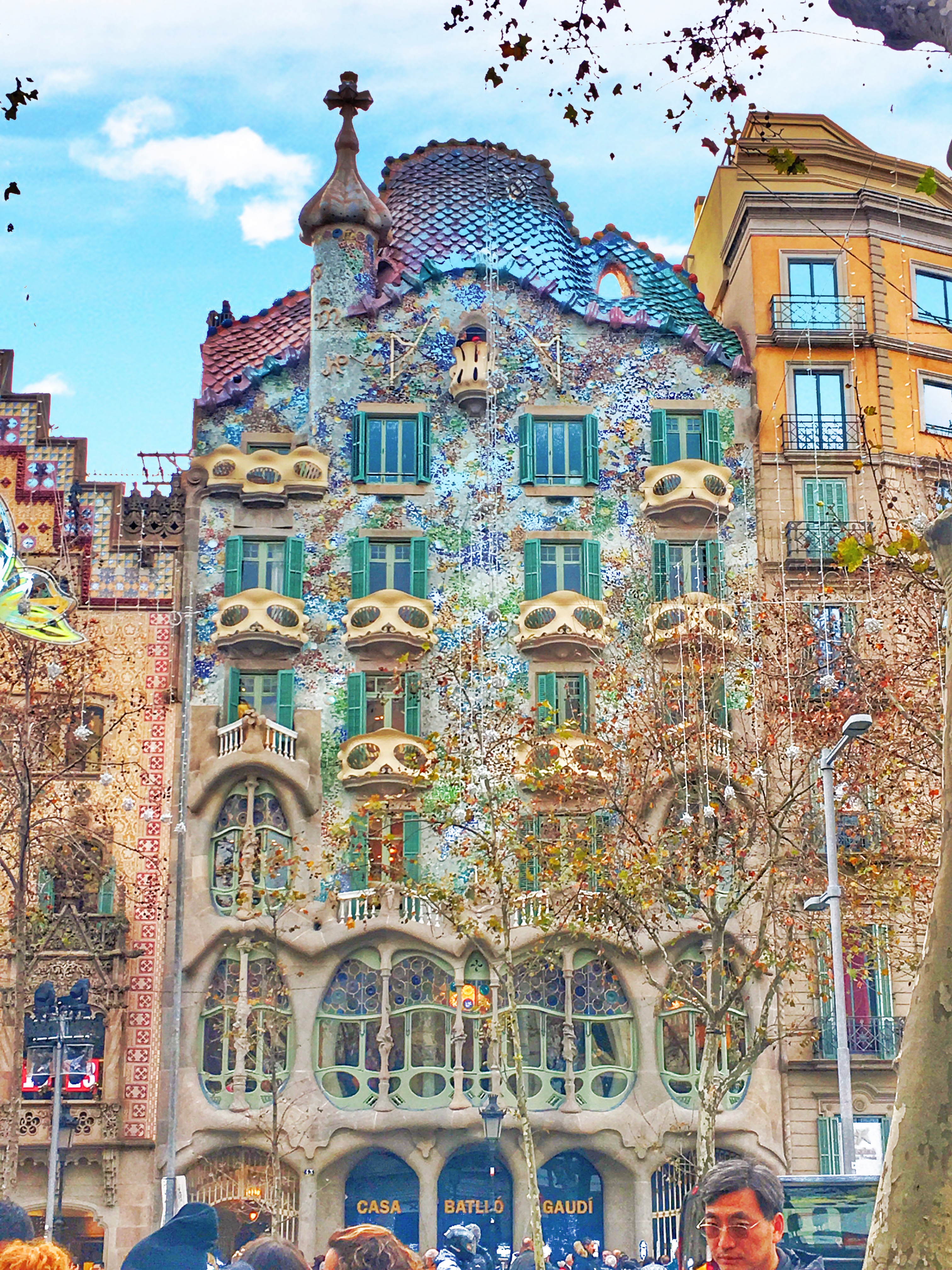
The roof of Casa Batllo was described to be the body of the dragon.
Antonio Gaudi‘s designs hardly had any straight lines, just like the roof of Haniffa. Most sources I read didn’t mention this, except for an article by Tata Steel. However, the main structure is oblong with Islamic motifs, making this building a very mish-mash fusion style.
There you have it, I hope you enjoyed this around-the-world travel in Novena, Whampoa and Balestier in Singapore.
Stop by one of the many food areas to eat and rest. Join me on this Balestier Tour with magic, puzzles and games. I guarantee that extended families and everyone of all ages will enjoy this fun tour like never before.
If you like this article Rediscovering Singapore, please drop a comment, share or give me a rating.

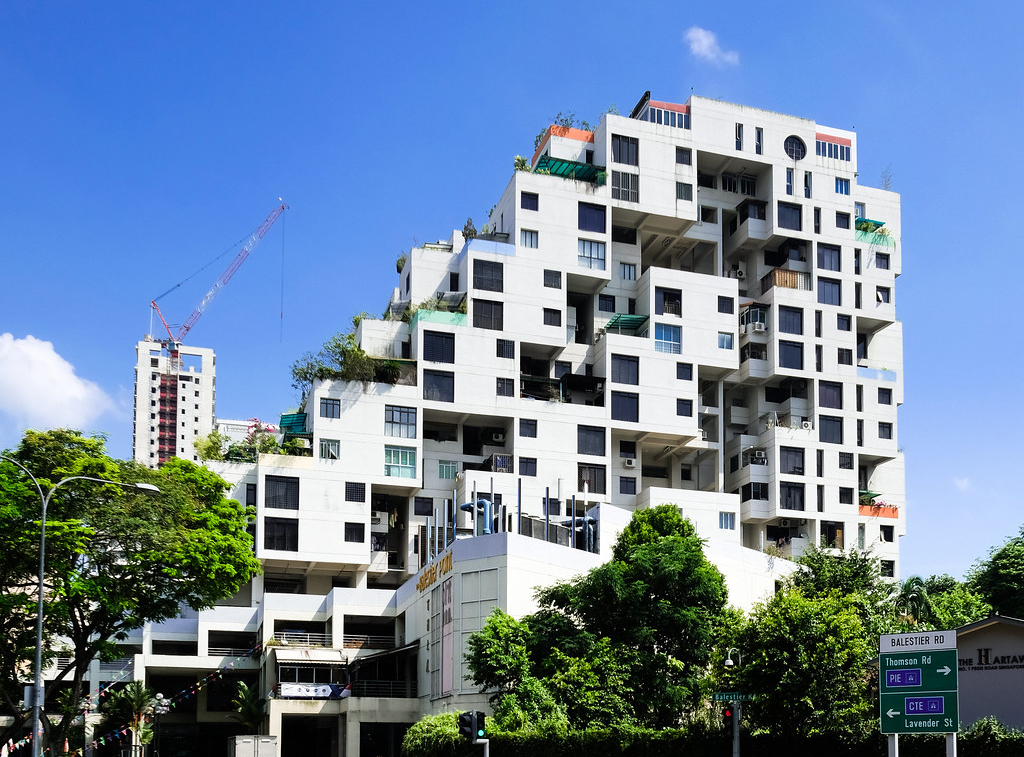

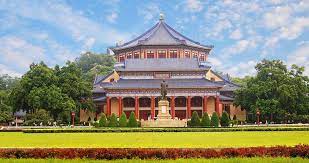
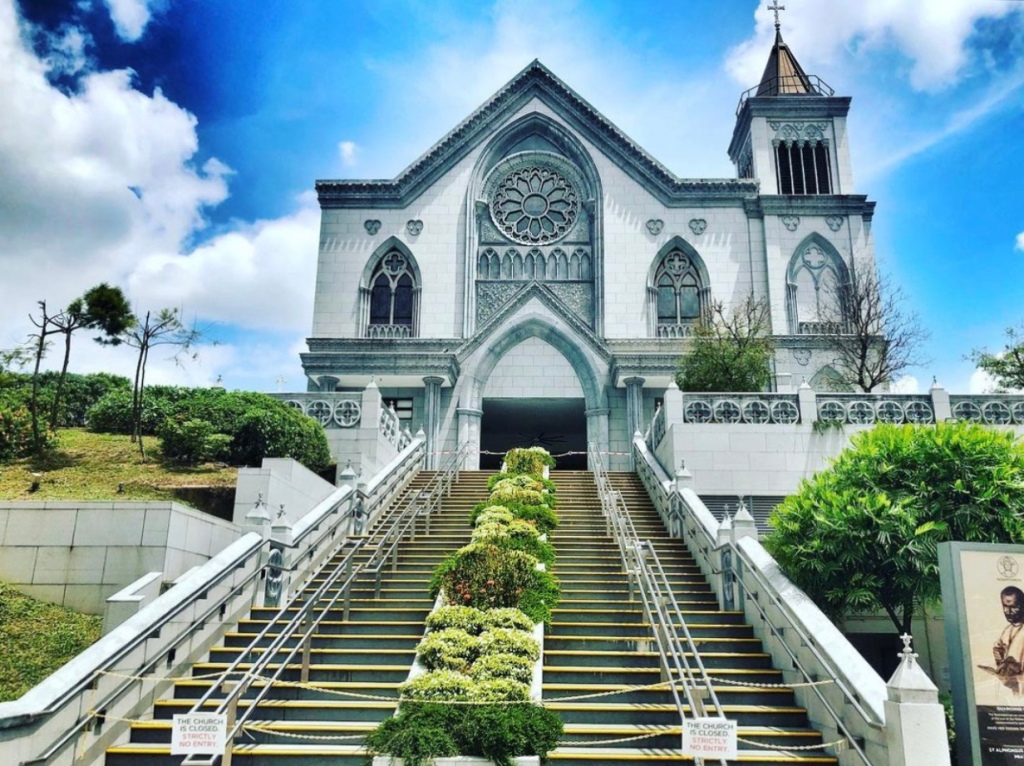
Pingback: 5 places to visit as though you are in China. | Hacks for family travels especially to Asia and theme parks.